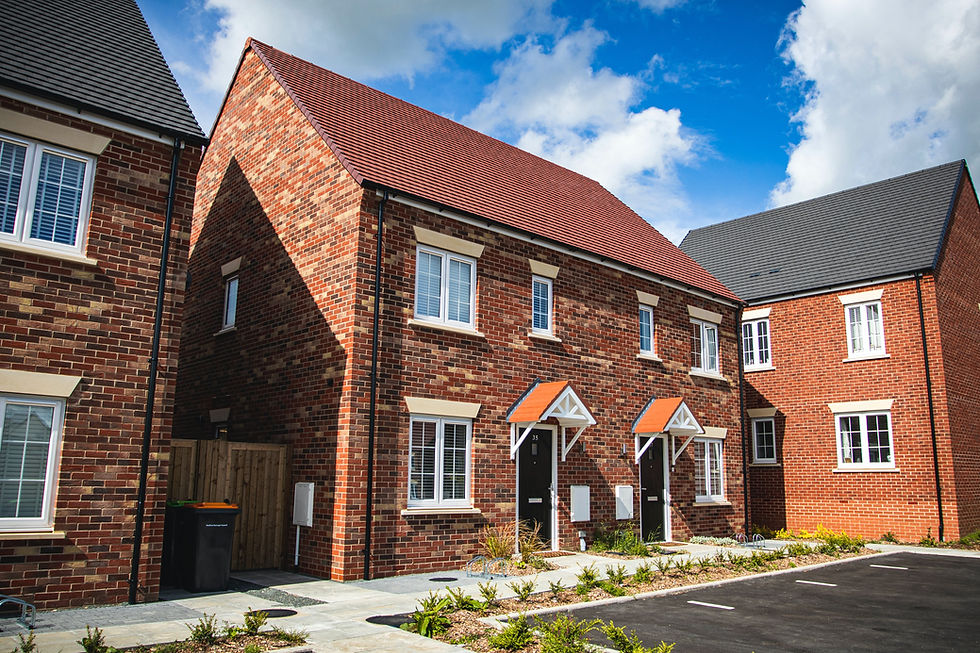The End of the Safety Net: Why Slashing Farm Subsidies Could Threaten the UK’s Food Future
- Paul Francis

- Apr 16
- 4 min read
Not only do UK farmers now face the looming threat of inheritance tax reforms that could force centuries-old family farms to be sold off - but they’re also contending with a policy shift that dismantles the very foundation of their economic stability: the withdrawal of direct farm subsidies.

In a time of global instability - wars in Europe and the Middle East, disrupted trade routes, volatile commodity markets - the UK government is removing financial safeguards that have underpinned British agriculture for decades. And it’s doing so faster than many in the industry can adapt.
The Basic Payment Scheme (BPS), a direct subsidy paid to farmers under the EU’s Common Agricultural Policy (CAP), is in its final years. By 2027, it will be completely gone. In its place: a complex, tiered system of environmental schemes under the umbrella of the Environmental Land Management Schemes (ELMS). Worthy in theory, but in practice? A mess of bureaucracy, delays, and shortfalls.
And the timing couldn’t be worse.
A Lifeline Cut-Off Before the Bridge Was Built
The BPS wasn’t perfect, but it provided one essential function - it kept farms afloat. Payments were calculated based on the amount of land farmed, offering predictability and a cashflow buffer that allowed British farms to invest in new equipment, manage seasonal fluctuations, and ride out the weather, both literal and economic.
Now, payments have been rapidly reduced. By 2024, many farmers had already lost 35%–50% of their BPS income. In 2025, a new cap of £7,200 per farm will apply. That’s a fraction of the £20,000 to £50,000 mid-size farms previously received.
The replacement - ELMS - promises payments for "public goods": improving soil health, reducing carbon emissions, boosting biodiversity. Laudable aims. But ask most farmers, and they’ll tell you: they don’t object to sustainability. What they object to is the speed and scale of the transition, and the fact that the new payments often don’t come close to replacing what’s being lost.
Environmental Schemes: Aspirations Without Infrastructure
At the core of ELMS are three tiers:
Sustainable Farming Incentive (SFI): Encourages low-level changes such as herbal leys, no-till farming, and reducing fertiliser use.
Local Nature Recovery: Pays for habitat restoration and targeted environmental actions.
Landscape Recovery: Funds large-scale, long-term ecosystem restoration, often in collaboration with multiple landowners.
But uptake has been patchy at best. As of late 2024, fewer than half of eligible farms had enrolled in any ELMS scheme. Why?
The schemes are confusing. Farmers must navigate different options, overlapping rules, and constant revisions.
The application process is time-consuming and opaque.
Payments under SFI are often insufficient, especially for mixed or livestock farms in upland areas where land-use change is more difficult.
Crucially, many tenanted farmers - nearly a third of all farms in England - face legal and logistical barriers to taking part.
DEFRA has promised streamlining. But meanwhile, farmers are left in limbo - without clear income streams, but still expected to feed the nation.
The Cost of Poor Policy Timing
Agricultural experts, rural economists, and even major retailers have raised alarm bells. In a scathing 2023 report, the National Audit Office warned that DEFRA had failed to communicate the changes effectively, leaving many in the dark about what the new schemes offer.
The NFU (National Farmers’ Union) has repeatedly called on the government to pause BPS cuts until ELMS is fully functioning, but those calls have largely been ignored. In late 2024, a coalition of MPs from all parties demanded a review, warning that this abrupt withdrawal of support could lead to an exodus from the industry.
And that’s not just a theoretical risk. A nationwide NFU survey found that 11% of farmers were considering leaving farming altogether due to the combined impact of reduced subsidies, labour shortages, and rising costs.
Food Security in an Uncertain World
This isn’t just a farming problem - it’s a national one.
The UK is already heavily reliant on imports for key food items. And with international trade routes threatened by conflict in Ukraine, instability in the Middle East, and shipping disruptions in the Red Sea, supply chains are becoming more fragile by the month.
Should we really be cutting back our domestic food production capacity now?
Government ambitions to rewild 10% of farmland, promote biodiversity, and shift toward carbon sequestration may look good on a whiteboard in Whitehall. But on the ground, it’s leading to reduced livestock numbers, lower domestic output, and a growing dependence on foreign markets that may not be as reliable as once assumed.
A Dangerous Gamble
To many farmers, this feels like an ideological experiment being conducted in real-time -with their livelihoods and our food supply on the line. And as supermarket CEOs and farming groups increasingly speak out, it’s clear this isn’t just grumbling from the shires. It’s a cry of alarm from the foundation of the UK’s food system.
Environmental ambition is important. Climate change is real. But so is hunger.
We can pursue sustainability - but not by pulling the rug out from under those who feed us. The government’s subsidy reform may have noble aims, but its execution is flawed, its timeline reckless, and its consequences potentially devastating.
If we want a resilient, secure food future, we must support the people who make it possible - not push them to the brink.







